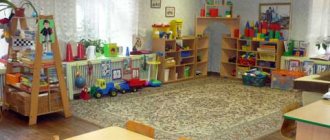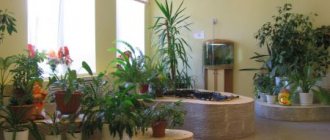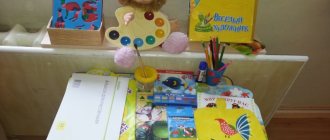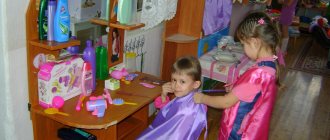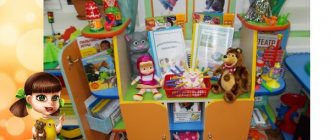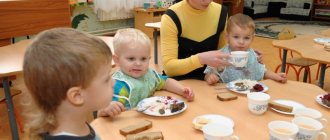Center for Fine and Artistic Activities
Modeling, appliqué, and drawing develop fine motor skills. This is important for establishing connections in the brain and developing speech. Therefore, it is logical to use the arts corner as a developing speech environment. What can be recommended for the equipment of this center:
- tables for fine art;
- easels;
- materials for work (paints, markers, pencils, albums, crayons, brushes, stencils, coloring books, napkins, plasticine and modeling tools, colored paper, glue, etc.); inserts, stickers, stencils;
- albums on Khokhloma, Gorodets and other paintings, on coloring nesting dolls, etc.
The role of the educator in the formation of the speech environment
The teacher’s speech is the main means of teaching and shaping preschoolers. Didactic communications are the basis of the speech environment, which can have great potential for the development of children's speech.
L.P. Fedorenko divides the speech environment into two components: this is a natural communicative environment, these are free conversations with peers and this is an artificial speech environment. Let's look at all these types in more detail.
A natural communication environment arises without the teacher’s efforts, on its own. But at the same time, it has an impact on the formation of the child’s abilities. It has a positive effect on mental development and the formation of speech abilities.
This happens if those who communicate with the child are those who have correct speech, who react to the preschooler’s statements and answer the children’s questions. But this environment can also be negative if adults do not pay attention to the child’s statements and do not communicate with him. Often such children develop speech defects.
This includes not only communication with teachers and parents, but also any communication of the child with people of different ages.
